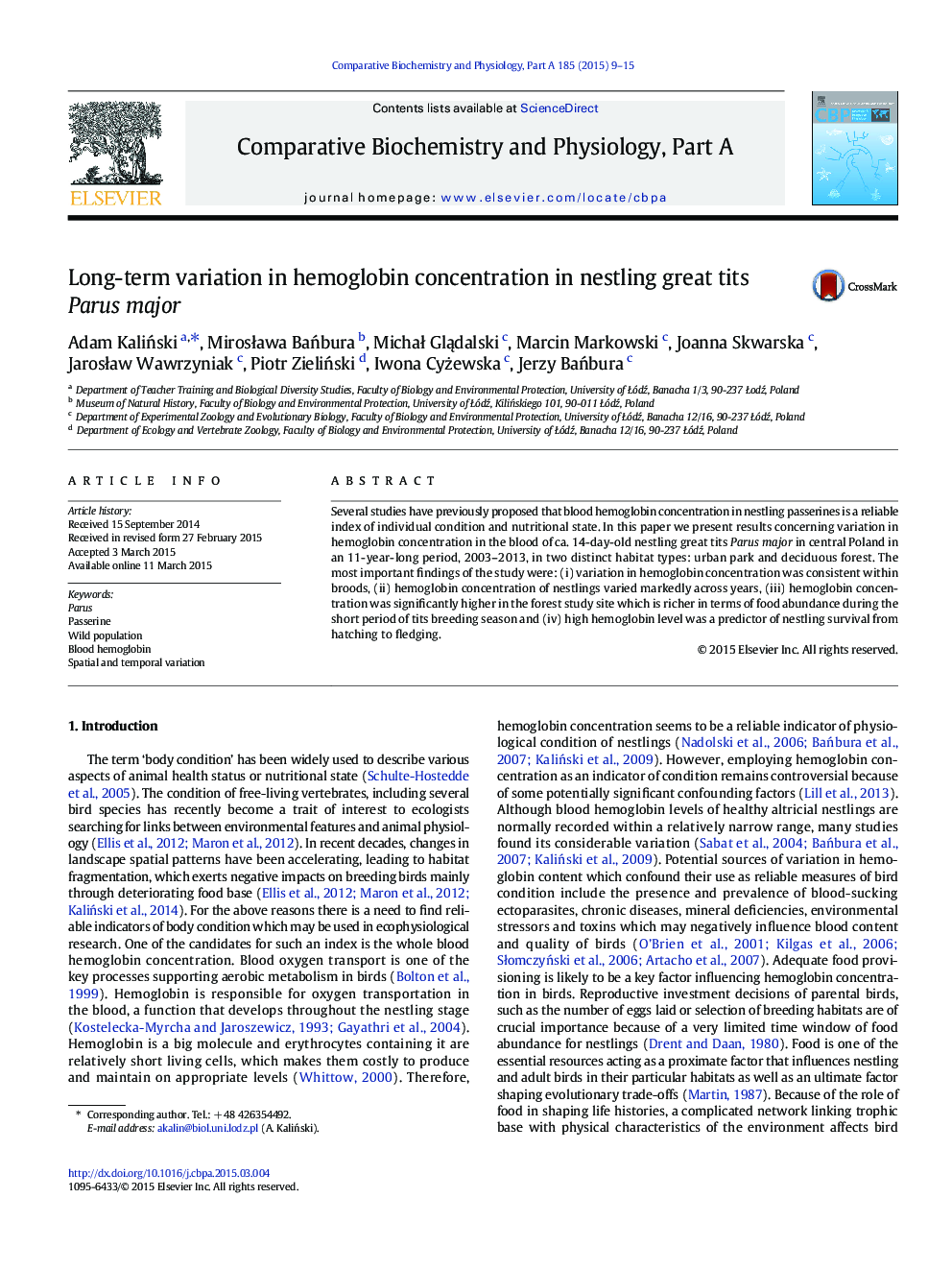| Article ID | Journal | Published Year | Pages | File Type |
|---|---|---|---|---|
| 8318555 | Comparative Biochemistry and Physiology Part A: Molecular & Integrative Physiology | 2015 | 7 Pages |
Abstract
Several studies have previously proposed that blood hemoglobin concentration in nestling passerines is a reliable index of individual condition and nutritional state. In this paper we present results concerning variation in hemoglobin concentration in the blood of ca. 14-day-old nestling great tits Parus major in central Poland in an 11-year-long period, 2003-2013, in two distinct habitat types: urban park and deciduous forest. The most important findings of the study were: (i) variation in hemoglobin concentration was consistent within broods, (ii) hemoglobin concentration of nestlings varied markedly across years, (iii) hemoglobin concentration was significantly higher in the forest study site which is richer in terms of food abundance during the short period of tits breeding season and (iv) high hemoglobin level was a predictor of nestling survival from hatching to fledging.
Related Topics
Life Sciences
Biochemistry, Genetics and Molecular Biology
Biochemistry
Authors
Adam KaliÅski, MirosÅawa BaÅbura, MichaÅ GlÄ
dalski, Marcin Markowski, Joanna Skwarska, JarosÅaw Wawrzyniak, Piotr ZieliÅski, Iwona Cyżewska, Jerzy BaÅbura,
